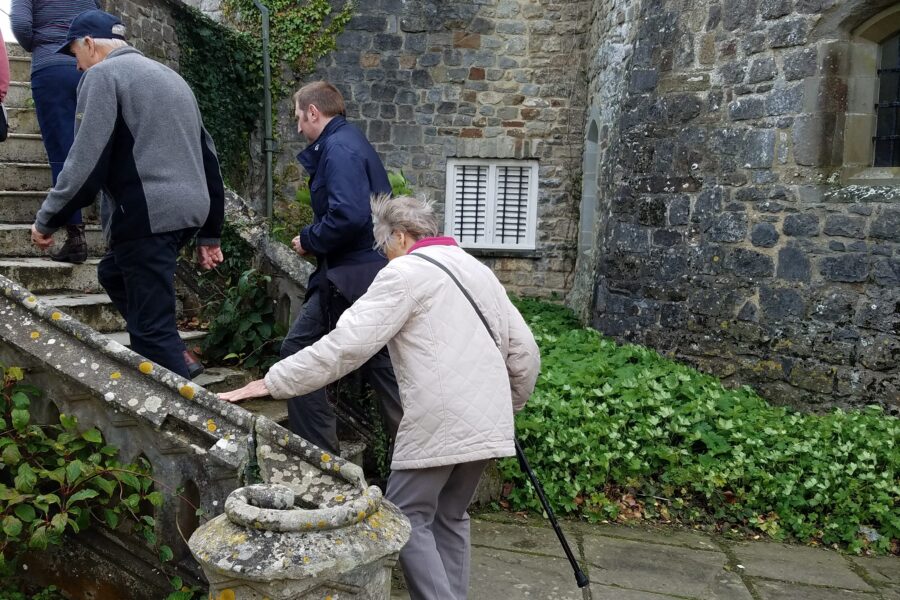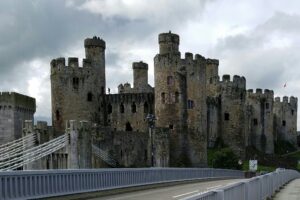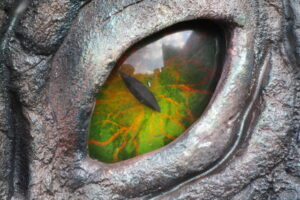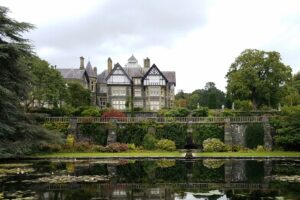Inside the Castle Walls
Standing in the middle of Picton Castle, what I want to do is take photos, but we are the only Americans in the group and the proper English tourists keep their hands at their sides, or in their pockets—no camera in sight. I don’t have the courage to ask if photography is allowed. My pensiveness must show because our guide approaches me and asks if something is wrong. “No nothing,” I say, “I was just wondering about the plant in this painting.”
The interior is fascinating, not so much because of sumptuousness, but because of the octagon shaped and round shaped rooms that flank the great hall. The doors are not flat but curved or angled. The original castle seems miniscule compared to others and somewhere along the centuries, a dissatisfied owner built an addition equal in size if not larger than the primary edifice. It is a combination of understated elegance and tattered genteel with wonderful kitchen collections that I can’t help but wish for—covet sounds too evil. There are even two ancient pressure cookers—the first one was built/created in 1679—I don’t covet those—those I’m afraid of.
A Bit of History
Built by a Flemish knight at the end of the 13th century, Picton Castle in Wales is like no other we have visited. It was never intended to be a fortress, but to always be a home. A kind of insurance sought by Henry I . His aim was to supplement his garrison in Pembroke by settling Flemings in the surrounding area. Later the castle came into the hands of another family whose heirs have lived here ever since. It is a complicated story of descendants and marriages and name changes that I really can’t keep track of, even when their portraits, hanging on the walls surrounding me, are pointed out.
What I do remember is that Queen Elizabeth II dined here twice—decades apart. The chandelier in one of the rooms has 1,000 pieces of crystal that the caretaker cleans once a year. And in WWII a hospital wing was built on the grounds of Picton for use as repatriating wounded American troops.

The Castle Grounds
The grounds consist of forty acres of various varieties of plants and gardens, from free form to formal. They are pleasant and natural but seem to be suffering from benign neglect in some areas. We follow our feet down a wide paved path, deviating occasionally into the forest exploring slick muddy trails. Intermittently we look to our left for a way down to the lower gardens. We avoid the bluebell path because it isn’t bluebell season, so why bother. Unexpectedly the end of the road takes us to a real road with cars whizzing by in both directions. We retrace our steps along the lengthy drive, turning down the path leading to the non-existent bluebells.


The English sense of humor is apparent in this mass of twisted metal depicting a tourist seeing the world through the camera’s eye.

The sign says, “The largest leaf plant that can grow outdoors in Great Britain.” My thought is that it is the largest leaf plant that can grow anywhere. Native to southeast Brazil it is part of a small species of flowering plants that have been existence for 95 million years.


We find ourselves in the Owls Secret Garden, and rather than amazement at the number and variety of these feathered predators I am unhappy to see them in cages. I wish for them a huge aviary haven—there’s room. Saddened by the number of owls being held prisoner, and not having eaten since very early this morning we go in search of sustenance. I have a plan.
Searching for Dinner
The parking lot at The Cottage Inn in Llangwm is full to overflowing. The street is full; we are in the middle of one that goes up too steeply. Michael patiently waits while I pop out of the car to make sure a further search for a parking space will be worth it. A customer in the bar gives me the low down. Returning to the Toyota I tell Michael, “This car park is all there is, and they are not serving food till 6 p.m.”
Jeeves guides us westward toward the tiny seaside hamlet of Little Haven and The Castle pub. Dinner service starts at 5 p.m.—only an hour away. We make do with happy hour gin and tonic and a bag of crisps, squandering time.














Leave a Reply
Your email is safe with us.